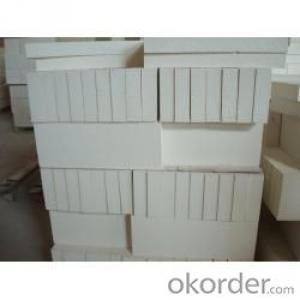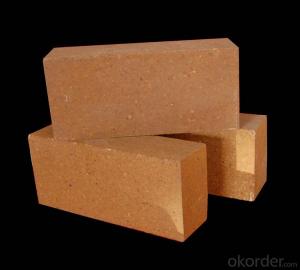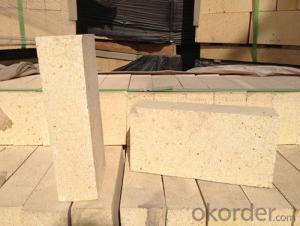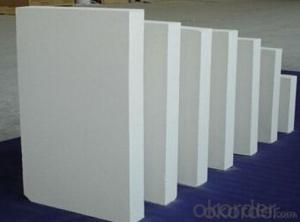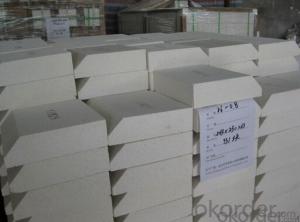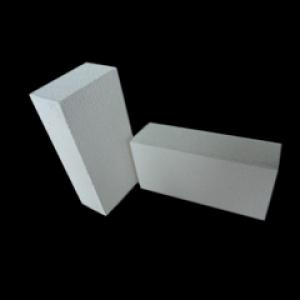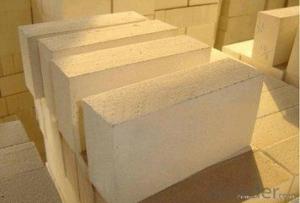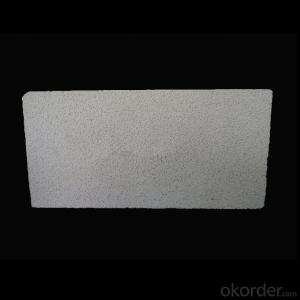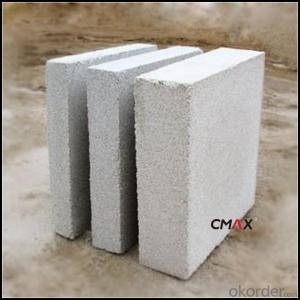High Quality Lightweight Insulating Fire Brick
- Loading Port:
- China main port
- Payment Terms:
- TT or LC
- Min Order Qty:
- 3 m.t.
- Supply Capability:
- 10000 m.t./month
OKorder Service Pledge
OKorder Financial Service
You Might Also Like
Thermal Insulation Fire Clay Brick
CNBM conforms strictly to the requirements of ISO 9000 quality control system during the production. MSDS is also available if you want. The thermal insulation fire clay brick meet with the requirements of ASTM & JIS standards. So please stay cool with our quality.
Application
Insulating Fire Brick are used for the lining of converter, alternating current arc furnace, direct Current arc furnace and the ladle slag line, etc.
Company Advantage
(1)Long Insulating Fire Brick manufacture history: 25 years manufacturer
(2)Advanced equipment
(3)Diversification of production standards: ISO ANSI FEPA JIS ASTM
(4)Flexible payment: T/T L/C D/P D/A
(5)Professional marketing team and after-sale service
(6)Free sample
Insulating Fire Brick main feature:
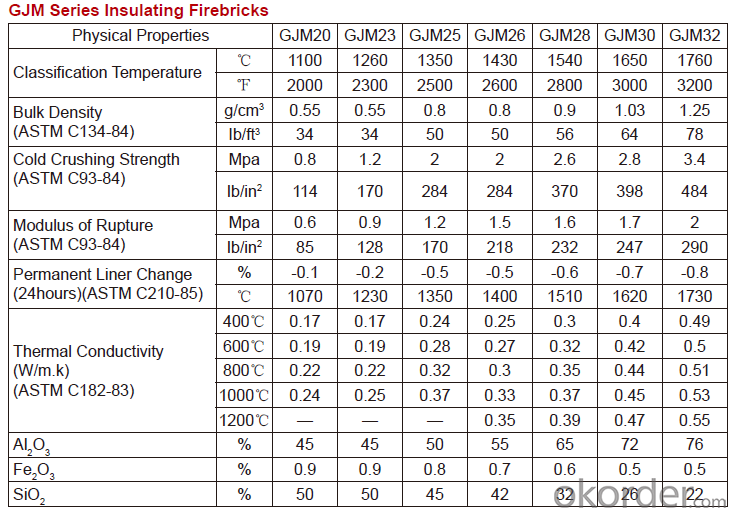
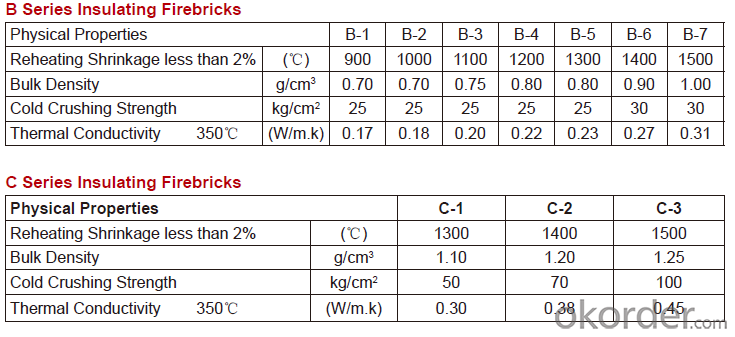
Equipment
1 unit of Ceramic Abrasive (SG Abrasive) pilot production line
2 units of Compact grain Abrasive pilot production lines
1 unit of high-end coated abrasives (abrasive cloth) production line
2 units of Boron Carbide production lines
3 large flexible crushing and sieving lines for grit production lines
2 units of 2000KVA furnaces for Boron Carbide fusion
6 units of 5000KVA-10000KVA dumping type electric arc furnaces for Brown Fused Alumina fusion
FAQs
Q1 What’s the transport method?
A1 FCL delivery goods with wooden pallet or wooden case by sea; If LCL delivery, must with wooden case; Sometimes need open top, flat rack or bulk cargo.
Q2 What’s the required payment term?
A2 Generally 30% TT as the prepayment, 70% TT before delivery. If need, 100% Irrevocable Letter of Credit or negotiation.
Q3 Which country are our products exported to?
A3 Apart from entire Chinese market, the US, Russia, Japan, Korea, Australia and some Southeast Asian Nations.

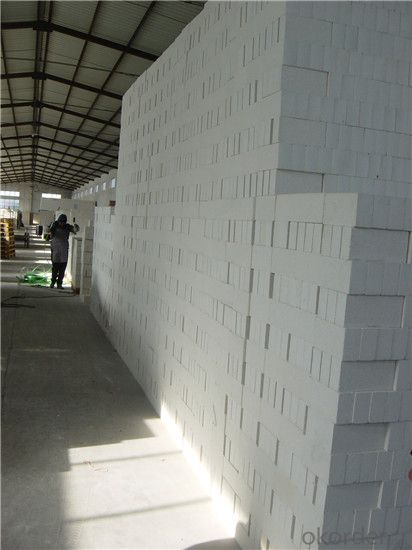
- Q: Can insulating fire bricks be used in refractory castings?
- Yes, insulating fire bricks can be used in refractory castings. Insulating fire bricks are lightweight and have high insulating properties, making them suitable for applications that require thermal insulation. This includes refractory castings, which are used to create linings in furnaces, kilns, and other high-temperature equipment. The insulating fire bricks can be used as a layer or as a part of the refractory casting mix to provide thermal insulation and reduce heat loss. Additionally, their low thermal conductivity helps in minimizing energy consumption and maintaining high temperatures within the casting.
- Q: What is the price of thermal insulation brick for exterior wall?
- Hello, the exterior wall insulation has many practices, useful insulation bricks, but also useful particles of polystyrene insulation mortar mixed (thickness is not the same, the price is not the same);
- Q: Can insulating fire bricks be used in boilers for steam generation?
- Yes, insulating fire bricks can be used in boilers for steam generation. Insulating fire bricks have excellent thermal insulation properties, which help to minimize heat loss and increase the overall energy efficiency of the boiler. Additionally, their high temperature resistance makes them suitable for the high heat and pressure conditions present in steam generation applications.
- Q: Are insulating fire bricks suitable for use in kilns?
- Indeed, kilns can benefit greatly from the utilization of insulating fire bricks. These bricks have been specifically engineered to endure high temperatures and possess exceptional insulation properties. Crafted from lightweight materials with low thermal conductivity, they possess the ability to efficiently retain heat and minimize heat loss. Consequently, they serve as an ideal lining for kilns, as they aid in the maintenance of consistent and controlled temperatures. This not only enhances energy efficiency but also reduces fuel consumption. Furthermore, insulating fire bricks exhibit remarkable resistance to thermal shock, enabling them to withstand sudden and extreme temperature fluctuations without succumbing to cracks or breakages. All in all, the utilization of insulating fire bricks for kiln linings guarantees reliability, effectiveness, and the elongation of the kiln's lifespan.
- Q: Can insulating fire bricks be used in outdoor fire pits?
- Certainly, outdoor fire pits can make use of insulating fire bricks. These bricks are specifically engineered to endure high temperatures, rendering them suitable for fire pit applications. They are crafted from heat-resistant materials like ceramic fibers or refractory substances, which aid in preserving the heat within the fire pit. Moreover, insulating fire bricks possess a lightweight composition and are effortless to install, making them a practical selection for outdoor fire pits. Nevertheless, it is crucial to bear in mind that these bricks may not possess the same level of durability as regular fire bricks. Thus, they might necessitate more frequent replacement if exposed to extreme temperatures or harsh weather conditions.
- Q: Can insulating fire bricks be used for insulation in ovens and kilns?
- Yes, insulating fire bricks can be used for insulation in ovens and kilns. They are designed to withstand high temperatures and provide excellent thermal insulation, making them an ideal choice for these applications.
- Q: How do insulating fire bricks help reduce heat loss through conduction?
- Insulating fire bricks are designed to minimize heat loss through conduction by utilizing their unique properties. These bricks are made from a special type of lightweight refractory material, such as ceramic fibers or a combination of high-alumina and silica, which have low thermal conductivity. The low thermal conductivity of insulating fire bricks helps to reduce heat transfer by conduction. When heat is applied to one side of the brick, the low thermal conductivity of the material prevents the rapid transfer of heat to the other side. This means that less heat is lost through the brick via conduction, resulting in improved insulation and energy efficiency. Furthermore, insulating fire bricks often have a high porosity, which creates air pockets within the material. These air pockets act as barriers to heat transfer, as air is a poor conductor of heat. By trapping air within the brick's structure, the insulating fire brick effectively slows down the movement of heat, further reducing heat loss through conduction. Additionally, insulating fire bricks have a high melting point, allowing them to withstand extreme temperatures without deforming or breaking down. This property ensures that the bricks can effectively insulate against heat transfer even in high-temperature environments, such as furnaces or kilns. In summary, insulating fire bricks help reduce heat loss through conduction by virtue of their low thermal conductivity, high porosity, and high melting point. These bricks effectively limit the transfer of heat from one side to the other, minimizing energy loss and improving insulation efficiency.
- Q: Can insulating fire bricks be used in the construction of flue liners?
- Yes, insulating fire bricks can be used in the construction of flue liners. Insulating fire bricks are designed to withstand high temperatures and provide excellent insulation properties. These bricks are made from lightweight materials such as vermiculite or perlite, which have low thermal conductivity. This makes them ideal for lining flues, as they can help to retain heat and improve the efficiency of the flue system. Additionally, insulating fire bricks are resistant to thermal shock and can withstand rapid temperature changes, which is important in flue applications where the temperatures can fluctuate significantly. Overall, using insulating fire bricks in the construction of flue liners can help to enhance the performance and safety of the flue system.
- Q: Can insulating fire bricks be used to build pizza ovens?
- Yes, insulating fire bricks can be used to build pizza ovens. Insulating fire bricks are known for their high heat resistance and low thermal conductivity, making them a suitable material for constructing pizza ovens that require high temperatures for efficient cooking. These bricks can help retain heat and distribute it evenly, resulting in a well-insulated and efficient pizza oven.
- Q: Can insulating fire bricks be used in ceramic fiber boards?
- Yes, insulating fire bricks can be used in ceramic fiber boards as they provide thermal insulation and enhance the overall insulation properties of the boards.
Send your message to us
High Quality Lightweight Insulating Fire Brick
- Loading Port:
- China main port
- Payment Terms:
- TT or LC
- Min Order Qty:
- 3 m.t.
- Supply Capability:
- 10000 m.t./month
OKorder Service Pledge
OKorder Financial Service
Similar products
Hot products
Hot Searches
Related keywords
